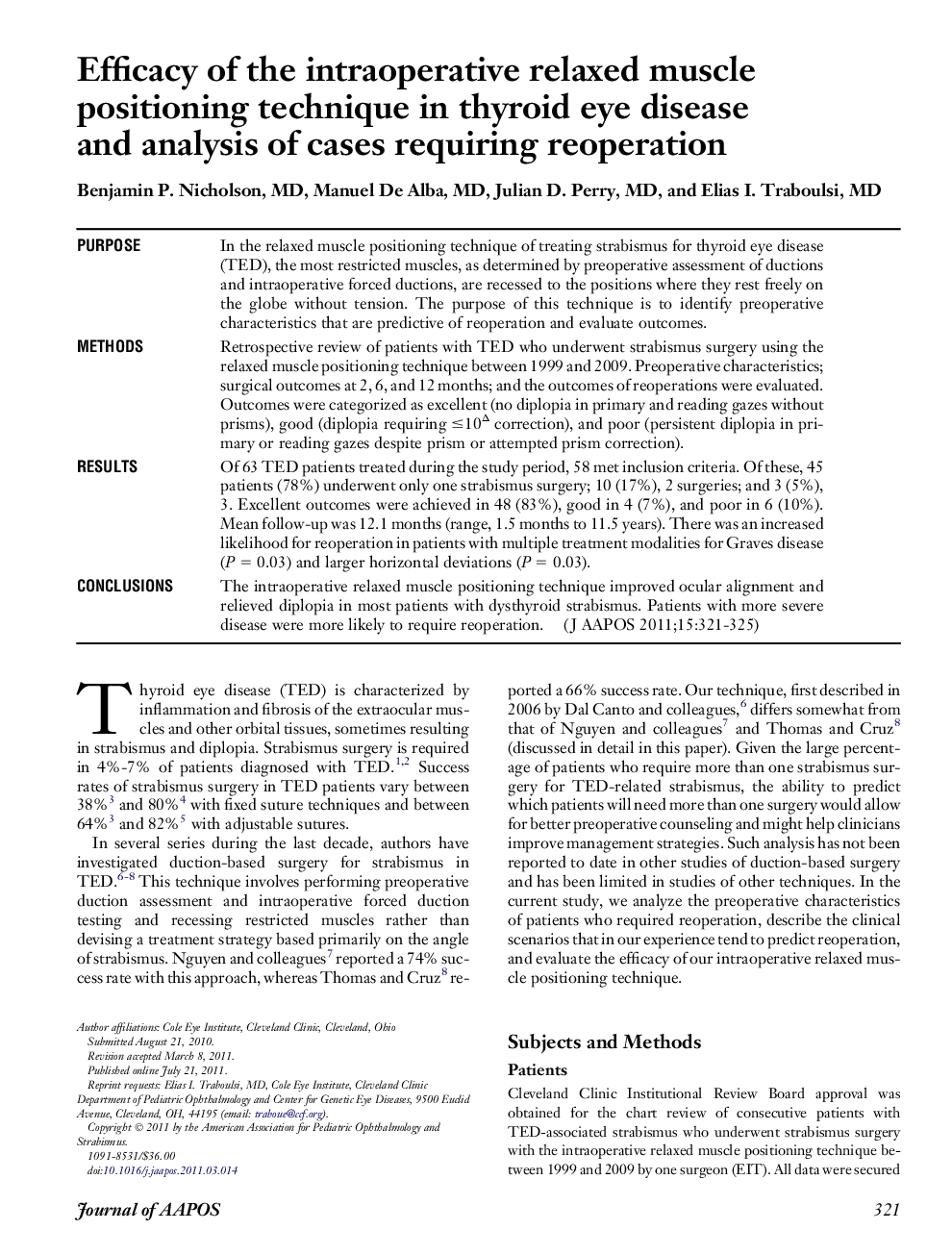| Article ID | Journal | Published Year | Pages | File Type |
|---|---|---|---|---|
| 4014551 | Journal of American Association for Pediatric Ophthalmology and Strabismus | 2011 | 5 Pages |
PurposeIn the relaxed muscle positioning technique of treating strabismus for thyroid eye disease (TED), the most restricted muscles, as determined by preoperative assessment of ductions and intraoperative forced ductions, are recessed to the positions where they rest freely on the globe without tension. The purpose of this technique is to identify preoperative characteristics that are predictive of reoperation and evaluate outcomes.MethodsRetrospective review of patients with TED who underwent strabismus surgery using the relaxed muscle positioning technique between 1999 and 2009. Preoperative characteristics; surgical outcomes at 2, 6, and 12 months; and the outcomes of reoperations were evaluated. Outcomes were categorized as excellent (no diplopia in primary and reading gazes without prisms), good (diplopia requiring ≤10Δ correction), and poor (persistent diplopia in primary or reading gazes despite prism or attempted prism correction).ResultsOf 63 TED patients treated during the study period, 58 met inclusion criteria. Of these, 45 patients (78%) underwent only one strabismus surgery; 10 (17%), 2 surgeries; and 3 (5%), 3. Excellent outcomes were achieved in 48 (83%), good in 4 (7%), and poor in 6 (10%). Mean follow-up was 12.1 months (range, 1.5 months to 11.5 years). There was an increased likelihood for reoperation in patients with multiple treatment modalities for Graves disease (P = 0.03) and larger horizontal deviations (P = 0.03).ConclusionsThe intraoperative relaxed muscle positioning technique improved ocular alignment and relieved diplopia in most patients with dysthyroid strabismus. Patients with more severe disease were more likely to require reoperation.
